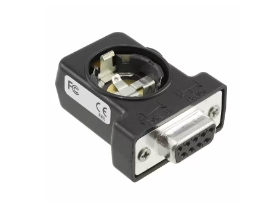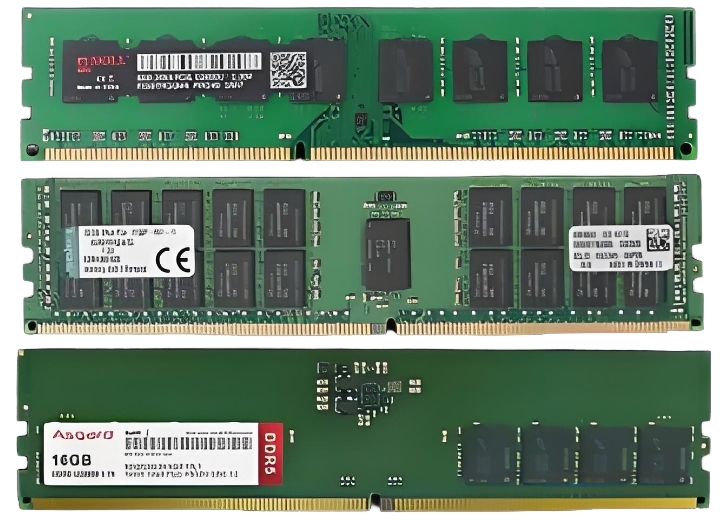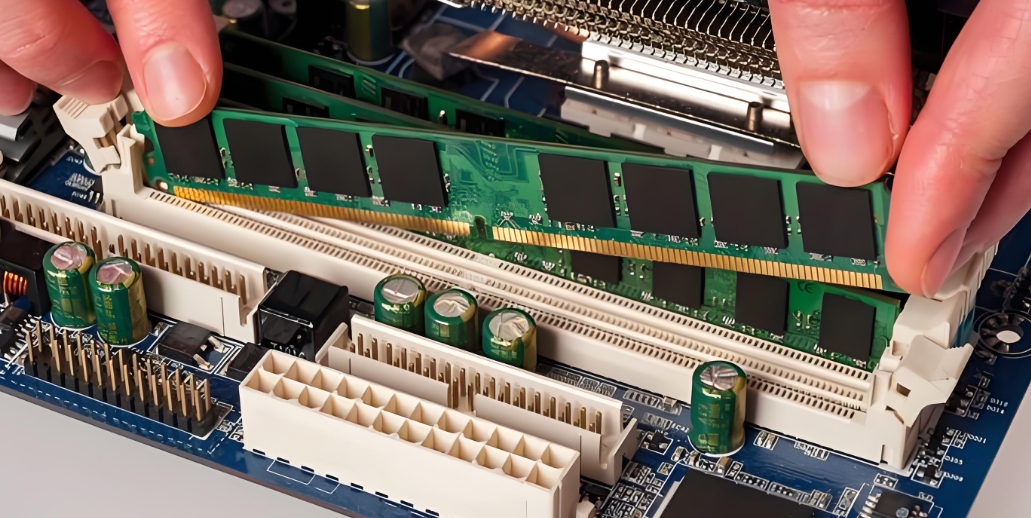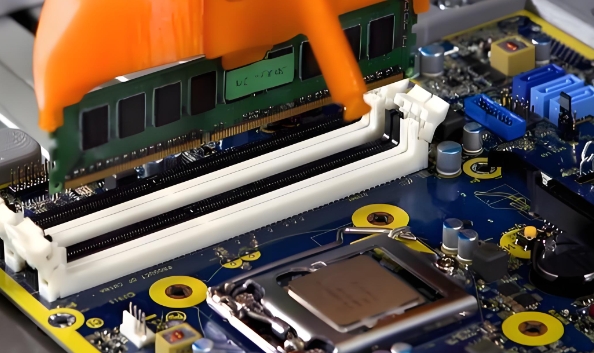Memory Connector Technical Guide - Compatibility, troubleshooting, and performance optimization
2024-07-16 14:55:01 915
In the previous article, "DIMM vs SO-DIMM vs LRDIMM: Memory Connector Types and Their Application Scenarios," we have learned about the basic concepts, features, functions, and differences between different types of memory connectors. Next, INFINITECH will fully analyze a range of issues related to memory connectors, including compatibility, fault diagnosis, performance impact, maintenance cleaning, installation, electromagnetic compatibility (EMC) issues, as well as connector durability and service life, to provide users with complete technical guidance and solutions.

How does the connector design affect the electromagnetic interference (EMI) and electromagnetic sensitivity (EMS) of the system?
The design of the connector has a direct impact on the electromagnetic interference (EMI) and electromagnetic sensitivity (EMS) of the system. EMI refers to the electromagnetic energy that the connector may radiate or conduct outwardly while working, while EMS measures the sensitivity of the connector to the surrounding electromagnetic environment. Several key factors in connector design can significantly affect these characteristics:
Factors affecting EMI
- The size, shape, and internal layout of the connector can affect how well it acts as an antenna, thus affecting EMI generation.
- The use of highly conductive materials can reduce the loss along the signal path, and the quality of the insulation material determines the degree of isolation of the signal.
- Metal shielding can absorb or reflect electromagnetic waves, reducing EMI radiation.
- EMI can be further suppressed by integrating a filter or choke in the connector.
- A good grounding strategy can effectively reduce the conduction and radiation of EMI.
Factors affecting EMS
-
The quality and continuity of the shield directly affect the connector's ability to resist external EMI.
-
The interface between the cable and the connector must be tight to reduce signal leakage and the introduction of external interference.
-
Connector design should minimize capacitive and inductive coupling to reduce EMS.
-
The use of insulating materials and physical partitions can improve connector isolation and reduce sensitivity.
In order to reduce external interference, connectors usually adopt the following shielding measures:
-
The signal contact around the connector is shielded by a metal material, which can effectively block the penetration of electromagnetic waves.
-
The shield needs to be reliably connected to the system via a low-impedance path to ensure that any captured electromagnetic energy can be dissipated quickly.
-
Filters are integrated into the signal and power line to absorb or block electromagnetic interference at specific frequencies.
-
Used to reduce common mode noise, especially on high-speed data transmission lines.
-
Use rubber washers or seals to ensure airtight and electrical tightness between the connector and the housing, preventing EMI intrusion through the gap.
When designing connectors, engineers consider various EMI and EMS countermeasures, such as optimizing the thickness, shape, and connectivity of the shielding material, and ensuring reliable contact between the shielding layer and the ground. In addition, EMC (electromagnetic compatibility) tests are carried out during the design phase to verify the connector's performance in the actual environment and make necessary adjustments.
How durable is the connector, especially in frequently plugged and unplugged scenarios?
The durability of the connector, especially in the case of frequent plugging and unplugging, is largely due to the selection of highly conductive materials at the contact points, such as gold or silver plated copper alloys, which significantly enhance the durability of the connector with their superior wear and corrosion resistance. The structural design of the connector, which covers the geometry, specifications and elastic characteristics of the contact parts, together with the precise adjustment of the spring force, are key factors to ensure stability in the insertion and removal operation. Excellent design can effectively reduce the degree of wear and ensure that every plug can achieve a reliable electrical connection. The precision production process ensures the dimensional accuracy of the connector, thereby reducing the probability of friction and damage during insertion and removal. Surface treatment processes, such as gold, silver or nickel coatings, further enhance the corrosion resistance and conductive efficiency of the contact points, adding to the durability of the connector.
The shell and bracket structure of the connector must have sufficient mechanical strength to withstand the stress impact generated during the insertion and removal process. The number of plug and pull cycles that the connector can withstand is the core indicator for evaluating its durability, and high-quality connectors can often withstand thousands or even tens of thousands of plug and pull tests. Operating environmental factors, such as temperature range, humidity levels, dust buildup, and the presence of corrosive gases, also have an impact on the service life of the connector. Reasonable use habits and regular maintenance, such as regular cleaning of the contact surface and preventing excessive mechanical pressure, can significantly improve the service life of the connector.

For frequently plugged and unplugged applications, manufacturers often design connectors with higher durability. For example, some connectors have a dual contact design so that even if one contact is worn, the other remains connected, improving overall reliability and durability. In addition, some connectors are equipped with special mechanisms, such as spring-loaded contacts or self-cleaning functions, to reduce wear during insertion and removal.
Is the memory compatible with a particular motherboard or system?
Memory, such as RAM modules, is not fully compatible with all motherboards or systems. To ensure compatibility, it is generally necessary to determine which type of RAM the motherboard supports, such as DDR3, DDR4, or DDR5 memory standards of different generations, which do not have backward compatibility. Motherboards often have specific memory speed (frequency) preferences or limits, which means that even with faster RAM installed, the motherboard may not be able to utilize its full performance. In addition, the motherboard may also set the maximum memory capacity for a single slot and the maximum amount of memory for the entire system. Modern motherboards may support two-channel, three-channel, or even four-channel memory configurations, and for optimal performance, RAM modules should be used in pairs depending on the number of channels on the motherboard. Different RAM modules have different operating voltage requirements, so the motherboard needs to match the correct voltage supply.
If the motherboard design supports ECC (error correction code) memory, the use of non-ECC memory may not only cause incompatibility problems, but also lose the data error correction capability of ECC memory. At the physical level, ensure that the RAM module size fits the slot on the motherboard and avoids space conflicts with the CPU heat sink or other hardware components. It is worth noting that 32-bit operating systems can theoretically only manage up to 4GB of RAM, while 64-bit operating systems can handle much more than that. The most reliable way to verify compatibility is to refer to the motherboard's user manual or visit the manufacturer's official website, which usually provides a list of verified or recommended memory.
Do the DDR3, DDR4, and DDR5 connectors match each other?
Each generation of DDR memory has its own unique connector and slot design, which is mainly to prevent incompatible memory from being mistakenly inserted into the motherboard, but also to ensure the optimization of electrical characteristics and signal integrity. Here are some of the main differences between DDR3, DDR4, and DDR5 connectors:

Number of stitches:
DDR3 memory chips typically have 240 pins.
DDR4 memory also has 284 pins.
DDR5 memory is further increased to 260 or 284 pins, depending on the package type.
Gap location:
DDR3 memory has a biased notch for positioning and preventing backsliding.
DDR4 memory has a similar notch, but in a different location than DDR3.
The notch position of the DDR5 memory bar changes again, and it is different from both DDR3 and DDR4.
Electrical characteristics:
Each generation of DDR memory has its own specific voltage and electrical specifications to support higher speeds and lower power consumption.
Physical size:
Although DDR3, DDR4, and DDR5 are similar in appearance, there are slight differences in size and shape due to changes in the number of pins and layout.
Due to these differences, DDR3 memory bars cannot be inserted into a slot for DDR4 or DDR5, and vice versa. The memory slots on the motherboard are specifically designed to accommodate specific generations of RAM to ensure proper electrical connections and physical fit. So when you buy a new memory bar, make sure it matches the type of memory your motherboard supports.
How to diagnose memory connector failure?
When the memory is not recognized by the system, how do you determine if the problem is the connector, the memory itself, or some other hardware? You can do this by following these steps:
1. Preliminary inspection
First check the memory (RAM) and slots on the motherboard for visible physical damage, such as bent pins, corrosion, or burn marks.
Gently wipe the golden finger with an eraser to remove any oxide layer that may be present, then clean the dust inside the slot with compressed air.

2. Diagnose BIOS/POST
Watch the POST message on the screen at boot time to see if there are any memory errors.
Enter BIOS/UEFI Settings and check whether memory information such as capacity, type, and speed is displayed.
3. Replace the test
If you have extra memory, try replacing it to see if you can fix the problem.
If possible, insert the memory into another slot and check to see if it is recognized.
Check that the CPU, power supply, and voltage regulation module (VRM) on the mainboard are not faulty.
4. Use diagnostic tools
Perform Memory stability tests using tools such as Memtest86, Prime95, Windows Memory Diagnostic, etc.
Check the operating system's event viewer for memory-related error logs.
5. Advanced inspection
Using software to monitor the temperature of the memory and motherboard, overheating can be one of the causes of the problem.
Make sure the motherboard BIOS and all associated drivers are up to date.
6, professional diagnosis
Such as oscilloscope check signal quality, or use a professional memory test bench for more in-depth troubleshooting.
If the above steps do not solve the problem, you may need to seek professional hardware repair services.
7. Fault isolation
Keep only the necessary hardware (CPU, memory, motherboard, graphics card, monitor, and power supply) and try to boot, gradually adding hardware until you find the component that is causing the problem.
Through the above steps, you can gradually narrow down the problem and determine whether it is the connector, the memory itself, or some other hardware. If the problem is intermittent, it may take several repeated tests to catch the symptom.
How to deal with system instability or blue screen caused by poor contact of memory card slot?
To deal with system instability or blue screen problems caused by poor contact of the memory (RAM) card slot, try the following steps: First make sure the computer is completely turned off and unplug the power cord from the power outlet to avoid electric shock or damage while handling the hardware. Open the chassis to access memory slots and memory bars. Use a clean eraser to gently wipe the gold finger of the memory bar to remove any oxide or dirt that may be present. Clean the memory slots and use compressed air to blow away dust and debris. Reinstall the memory module and take it out of the slot. Do not touch the electronic components on the memory module to avoid electrostatic damage. Align the memory module with the slot, make sure the direction is correct, and press down evenly until the latch automatically locks. Ensure that the memory module is secured by the buckle. If you find that the memory is still prone to loosening, you can gently clamp the plastic shell on both sides of the memory with a clothespeg to put extra pressure on the memory and help improve the contact.
Restart your computer, go to BIOS Settings, and check that the correct memory capacity and type are detected. Once started, you can use a Memory testing tool, such as MemTest86 or Windows Memory Diagnostic, to check the stability and integrity of the memory. Check the compatibility between the memory module and the mainboard, including the type, speed, and voltage. If possible, update the motherboard's BIOS to the latest version, sometimes BIOS updates can address compatibility and stability issues.
If the preceding steps do not work, the memory module or card slot may be damaged and the faulty component needs to be replaced. If the problem persists, you may need to send it to repair or get a professional to conduct a more in-depth inspection and repair.
How does connector contact quality affect memory performance and stability?
The contact quality of the connector plays a decisive role in the performance and stability of the memory, especially RAM. The storage module is connected to the motherboard through a connector. Once the connector contact is poor, the contact resistance of the circuit will be increased, which will cause energy loss and signal attenuation during signal transmission. Sub-optimal contact can also induce signal reflection and crosstalk problems, interfering with accurate data transmission. This may not only cause data read and write errors, raise the bit error rate (BER), damage the integrity and reliability of the data, and even cause the system to restart without warning, display blue screen or stall due to the instability or sudden interruption of the signal. The memory performance fluctuation caused by the contact problem will prolong the processing time of computing tasks and slow down the system reaction speed. In addition, poor contact may also stimulate local overheating, because increased contact resistance will cause the temperature in the area to rise, posing a threat to the life and stability of the memory chip.
The gold fingers of connectors and memory strips exposed to the air for a long time may suffer oxidation or corrosion, which will weaken their conductive ability and damage the contact quality. With frequent insertion or continuous use, the connector may suffer physical damage, such as pin deformation, breaking, or weakened elasticity, which can negatively affect contact. Design flaws, including improper selection of size, shape or material, are potential causes of poor contact. In short, ensuring good connector contact is the key to maintaining stable memory operation.
To ensure good contact quality, connectors on memory modules and motherboards require regular maintenance, including cleaning goldfingers and slots to ensure there is no dust, oxides or other contaminants. In addition, proper installation and proper cooling measures can also help maintain the connector in good condition, thus guaranteeing high performance and high stability of the memory. If frequent system problems are encountered, checking and replacing connectors or memory modules may become a necessary solution.
How to install memory modules correctly to ensure good electrical contact?
Proper installation of memory modules (such as RAM) to ensure good electrical contact is important not only to ensure stable system operation, but also to avoid potential hardware damage. Here are the detailed installation steps:
Preparatory work
Before installation, make sure you have taken measures to prevent static electricity, such as wearing an anti-static wristband, or if you are not wearing a wristband, regularly touch metal objects to release static electricity.
Make sure the computer is completely turned off and the power cord is unplugged to avoid powering on during installation.
Installation process
Open the computer's case to access the memory slot.
Locate the memory slot (usually labeled DIMM slot) on the motherboard. Check that the slot is clean and dust-free to ensure that there are no foreign objects or corrosion.
Take the memory module out of the ESD package. Do not touch the circuits and chips on the memory module with your hands to avoid electrostatic damage.
Finding the notch mark (usually a notch or dip) on the memory bar and making sure that this mark is aligned with the bulge on the slot is key to preventing backsliding.
Place the memory bar perpendicular to the motherboard, align it with the slot, and gently but firmly push the memory down until the latches on both ends automatically pop out and secure the memory.

Ensure that the memory module is securely secured by the latches on both sides. Do not loosen or shake the memory module.
After confirming that the memory module is correctly installed, close the chassis panel, and reconnect the power cable and other external cables.
Subsequent steps
Restart your computer, go to BIOS or UEFI Settings, and check that the newly installed memory and its capacity and type are correctly identified.
Use a Memory testing tool, such as MemTest86 or Windows Memory Diagnostic, to test whether the newly installed memory is working properly and without errors.
Matters needing attention
-
During the entire installation process, do not use excessive force to avoid damaging the memory module or mainboard.
-
If multiple memory modules need to be installed, ensure that the memory channel configuration requirements of the motherboard are followed for optimal performance.
-
After the installation, if the system is abnormal, shut down the system immediately to check whether the memory module is loose or improperly installed.
By following the above steps, you can safely and correctly install the memory module, ensuring good electrical contact between it and the motherboard.












